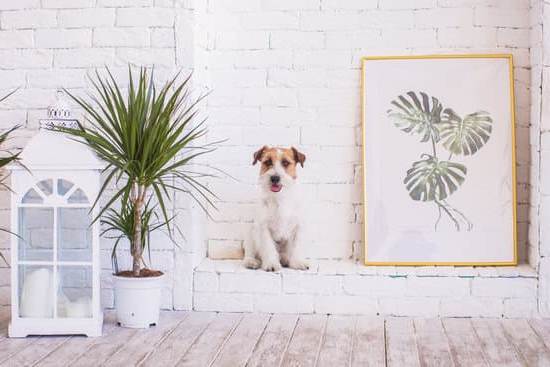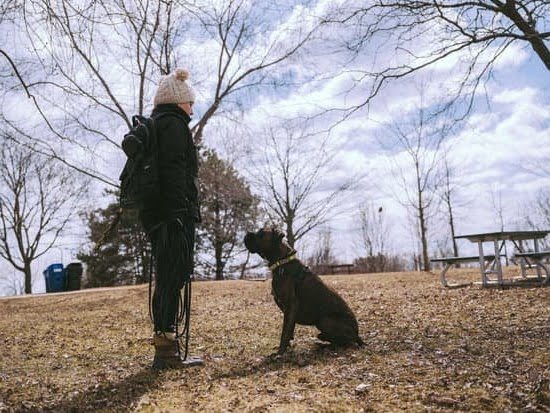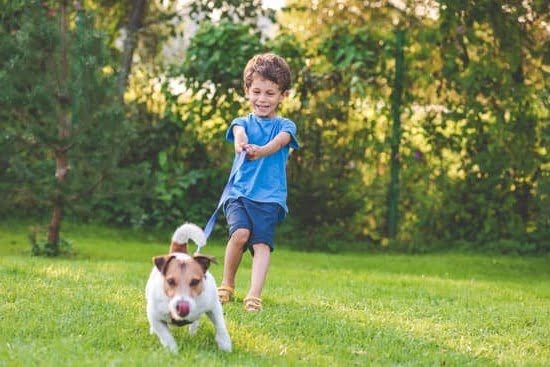Are you wondering how to train a dog off pee pads? Many pet owners rely on pee pads as a convenient potty solution for their dogs, especially for those living in apartments or working long hours.
However, it’s important to understand the negative impact of relying on pee pads for too long and the need to transition your dog away from them. In this article, we will explore the reasons why it’s crucial to train your dog off pee pads and provide effective techniques for successfully transitioning your furry friend to outdoor potty habits.
Relying on pee pads for too long can have a negative impact on your dog’s potty training progress. It can lead to confusion about where it’s appropriate to eliminate and make it challenging for your dog to understand the concept of outdoor pottying.
Additionally, some dogs may develop a dependency on pee pads, making it difficult for them to adjust to going potty outside. As a responsible pet owner, it’s essential to set up a designated potty area for your dog and use positive reinforcement techniques to encourage outdoor potty habits.
Creating a consistent potty schedule is crucial when transitioning your dog off pee pads. Dogs thrive on routine, so establishing regular times for bathroom breaks can help reinforce good potty habits.
This consistency can also help prevent accidents inside the house and make the transition process smoother for both you and your canine companion. In the following sections, we will delve into practical tips and strategies for successfully transitioning your dog off pee pads and celebrating their progress as they learn to use the designated outdoor potty area.
The Negative Impact of Relying on Pee Pads for Too Long
Pee pads are often used as a convenient potty training tool for dogs, especially for those who live in apartments or have limited outdoor access. While they can be helpful during the initial stages of potty training, relying on them for too long can have negative effects on your dog’s potty habits. Dogs may become too accustomed to using pee pads indoors, making it difficult to transition them to exclusively going outside.
One of the biggest drawbacks of relying on pee pads for too long is that it can hinder the development of good potty habits in your dog. They may not understand the concept of holding their bladder until they can go outside, leading to frequent accidents indoors even when the pee pads are available. Additionally, some dogs may develop a preference for going potty indoors rather than outside, making it challenging to break this habit.
To successfully transition your dog off pee pads, it’s important to gradually reduce their reliance on them and encourage outdoor potty habits. This process requires patience and consistent training techniques to help your dog understand where they should be going potty. It’s also essential to create a designated potty area outside and use positive reinforcement methods to reward and encourage good behavior.
| Negative Impact | Relying on Pee Pads |
|---|---|
| Hindered development of good potty habits | Increased accidents indoors |
| Preference for indoor pottying | Difficulty breaking the habit |
| Gradual reduction in pee pad use | Positive reinforcement for outdoor potty habits |
Setting Up a Designated Potty Area for Your Dog
When transitioning your dog off pee pads, it is crucial to set up a designated potty area for them to use outdoors. This will help your dog understand that they need to go outside instead of relying on pee pads indoors. Here are some tips for setting up a designated potty area:
1. Choose the right spot: Select an area in your yard that is easily accessible for your dog and away from high traffic areas. It should also be an area that is easy for you to monitor and clean up.
2. Use visual cues: Consider placing some visual cues in the designated potty area, such as a stake with a flag or a small sign. This will help your dog recognize where they should go potty.
3. Keep it clean: Make sure to keep the designated potty area clean by regularly picking up waste and maintaining the cleanliness of the space.
By following these steps, you can create a designated potty area that will help your dog understand where they should go potty outdoors, ultimately assisting in the transition away from pee pads.
Once you have established the designated potty area, it is important to use positive reinforcement techniques to encourage your dog to use this space for their bathroom needs. By consistently praising and rewarding your dog when they use the designated potty area, they will learn that this behavior is desirable and be more inclined to continue doing so in the future.
Remember to be patient and persistent in this training process, as it may take time for your dog to fully adjust to this new routine.
Using Positive Reinforcement Techniques to Encourage Outdoor Potty Habits
When it comes to transitioning a dog off pee pads, using positive reinforcement techniques is crucial for encouraging outdoor potty habits. This method involves rewarding your dog for exhibiting the behavior you want to see, in this case, going potty outside. Here are some effective positive reinforcement techniques to help train your dog off pee pads:
- Use treats: When your dog goes potty outside, immediately give them a treat as a reward. This will create a positive association with going potty in the designated outdoor area.
- Praise and affection: In addition to treats, be sure to praise and show affection to your dog when they go potty outside. Use an enthusiastic tone of voice and petting to reinforce the desired behavior.
- Clicker training: Clicker training can be a useful tool for teaching dogs new behaviors. Use a clicker to mark the moment your dog goes potty outside, followed by a treat or praise.
Positive reinforcement not only helps in establishing good potty habits but also strengthens the bond between you and your furry friend. By consistently using these techniques, you can effectively teach your dog that going potty outside results in positive rewards.
Consistency is key when using positive reinforcement techniques to encourage outdoor potty habits in dogs. Always use the same command or cue when directing your dog to go potty outside, and make sure that everyone in the household follows the same routine. With patience and persistence, along with positive reinforcement, you can successfully train your dog off pee pads.
Remember, every dog is different, so it’s important to be patient and understanding throughout this training process. Eventually, with consistent training and positive reinforcement, your furry companion will learn to prefer going outside to do their business.
Creating a Consistent Potty Schedule for Your Dog
Creating a potty schedule for your dog is an essential part of transitioning them off pee pads and encouraging outdoor potty habits. It’s important to understand that dogs thrive on routine, and having a consistent schedule will help them understand when and where they should go potty.
Understanding Your Dog’s Potty Needs
Before creating a potty schedule for your dog, it’s crucial to understand their potty needs. Different breeds and ages of dogs may have different potty schedules, so it’s essential to observe your dog’s behavior to determine when they typically need to go potty. Typically, puppies need to go out more frequently than adult dogs, and smaller breeds may also have smaller bladder capacities.
Establishing Set Potty Times
Once you have an understanding of your dog’s potty needs, you can establish set potty times throughout the day. This may include taking them out first thing in the morning, after meals, before bedtime, and at regular intervals throughout the day. By setting specific times for your dog to go outside, you can help them develop a routine and reduce the likelihood of accidents indoors.
Consistency Is Key
Consistency is crucial when establishing a potty schedule for your dog. Be sure to take them out at the same times each day and provide positive reinforcement when they go potty outside. Over time, your dog will come to anticipate these regular opportunities to go outside and will be less likely to rely on pee pads indoors.
By creating a consistent potty schedule for your dog, you can effectively transition them off pee pads and encourage outdoor potty habits. Pay attention to their individual needs, establish set potty times throughout the day, and remain consistent with your training efforts to set them up for success.
Dealing With Accidents and How to Handle Them Effectively
Accidents are an inevitable part of the transition process when training a dog off pee pads. It is important to understand that accidents will happen, and how you handle them will significantly impact your dog’s progress. When dealing with accidents, it is crucial to remain calm and avoid scolding or punishing your dog. Instead, focus on redirecting their behavior and reinforcing positive potty habits.
One effective way to handle accidents is to clean up the mess thoroughly using a pet-safe cleaner that eliminates odors. This will help prevent your dog from being drawn back to the same spot for potty purposes. Additionally, try to identify any patterns or triggers that may have led to the accident, such as a change in routine or excessive excitement. Understanding these factors can help you preempt future accidents and adjust your training approach accordingly.
When accidents occur, take it as an opportunity to reassess your training methods and make necessary adjustments. Consider whether your designated potty area is easily accessible for your dog or if there are any distractions that may be deterring them from using it. By continuously evaluating and adapting your training approach, you can effectively minimize accidents and reinforce good potty habits in your dog.
Remember that transitioning a dog off pee pads requires patience and persistence. Stay consistent with your training techniques and maintain a positive attitude, even during setbacks. With time and dedication, you can successfully train your dog to rely on outdoor potty habits instead of pee pads.
Patience and Persistence
Successfully transitioning your dog off pee pads requires patience and persistence. It is important to remember that this process may take time and that accidents are inevitable. However, with the right training techniques and consistency, you can help your dog develop good potty habits.
One of the most effective ways to train a dog off pee pads is to use positive reinforcement. When your dog successfully goes potty outside, be sure to praise them and offer a small treat as a reward. Positive reinforcement helps create a positive association with going potty outdoors, making your dog more likely to repeat this behavior.
Consistency is key when transitioning your dog off pee pads. Establishing a regular potty schedule for your dog helps them understand when and where they should go potty. Take your dog outside at the same times every day, such as first thing in the morning, after meals, and before bedtime. This consistent routine will help reinforce good potty habits.
It’s also important to be patient with your dog during this transition period. Accidents will happen, but it’s crucial not to scold or punish your dog for them. Instead, focus on redirecting their behavior and providing gentle guidance towards the desired outcome of going potty outside.
| Training Method | Description |
|---|---|
| Positive Reinforcement | Using treats and praise to encourage outdoor potty habits. |
| Potty Schedule | Establishing consistent times for bathroom breaks. |
| Patience | Avoid scolding or punishing accidents, instead provide gentle guidance. |
Celebrating Progress and Reinforcing Good Potty Habits
Recognizing and Celebrating Progress
As you work on transitioning your dog off pee pads, it’s important to recognize and celebrate every small step forward. Whether it’s your dog showing interest in the designated potty area or successfully eliminating outside, positive reinforcement is key. Celebrate these moments with praise, treats, and affection to reinforce the desired behavior.
Consistent Reinforcement
In addition to celebrating progress, it’s crucial to consistently reinforce good potty habits. This means continuing to offer rewards and positive reinforcement every time your dog eliminates in the designated outdoor area. Consistency is key in solidifying the new potty routine for your furry friend.
Introducing New Challenges
Once your dog is consistently using the outdoor potty area, consider introducing new challenges to further reinforce good potty habits. This can include varying the environment in which they eliminate (such as different areas of the backyard or during walks) to ensure that they generalize their new potty habits beyond just one specific spot.
By understanding how to train a dog off pee pads, celebrating progress, and consistently reinforcing good potty habits, you can effectively transition your pup to a pee pad-free household. Remember that every dog is different, so patience and persistence are key throughout this process.
Common Mistakes to Avoid When Transitioning Your Dog Off Pee Pads
Transitioning your dog off pee pads can be a challenging process, but it is important for their long-term potty habits and overall well-being. In order to successfully transition your dog away from relying on pee pads, there are some common mistakes that should be avoided.
First and foremost, one of the biggest mistakes pet owners make when trying to transition their dog off pee pads is being inconsistent with their training methods. Consistency is key when it comes to training a dog, and this is especially true when trying to change their bathroom habits. It’s crucial to stick to a routine and consistently reinforce positive behavior when your dog goes potty outside.
Another common mistake is punishing your dog for accidents in the house. It’s important to remember that accidents will happen during the transition period, and punishing your dog for them can actually set back the training process. Instead of punishment, focus on redirecting your dog to the designated potty area and positively reinforcing good behavior when they go potty outside.
Additionally, another mistake to avoid is not being patient enough during the transition process. It takes time for dogs to adjust to new routines and habits, so patience is essential. Keep in mind that every dog learns at their own pace, so it’s important to remain patient and persistent in your training efforts.
By avoiding these common mistakes and following positive reinforcement techniques along with patience and consistency, you can successfully transition your dog off pee pads and establish good outdoor potty habits. Remember that every step in the right direction should be celebrated as progress, and continue reinforcing good potty habits as your dog becomes accustomed to their new routine.
Conclusion
In conclusion, transitioning your dog off pee pads and establishing a pee pad-free household can bring numerous benefits for both you and your furry friend. By setting up a designated potty area and utilizing positive reinforcement techniques, you can encourage good outdoor potty habits in your dog. Consistency is key when it comes to training your dog off pee pads, so creating a regular potty schedule and being patient and persistent throughout the process will ultimately lead to success.
It’s important to remember that accidents will happen during the transition period, but knowing how to handle them effectively with positive reinforcement rather than punishment is essential. Celebrating progress and reinforcing good potty habits will also help motivate your dog to continue their outdoor potty routine.
Avoiding common mistakes such as reverting back to pee pads or not being consistent with the training process is crucial for successfully transitioning your dog off pee pads. With dedication and consistent training techniques, you can enjoy the benefits of a pee pad-free household, including a more hygienic living environment and a stronger bond with your dog based on effective communication and trust.
If you are still struggling with this transition read our previous section on how to train a dog off pee pads for more tips that may be helpful for this process.
Frequently Asked Questions
How Do I Transition My Dog From Pee Pad?
Transitioning your dog from pee pads to going outside can be a gradual process. Start by moving the pee pad closer to the door and eventually outside. Use positive reinforcement and patience to encourage your dog to go potty outdoors.
At What Age Should a Dog Stop Using Pee Pads?
Dogs can stop using pee pads at different ages, but typically by the time they are fully house trained, which is around 4-6 months old. However, some small breeds may continue using pads for longer periods due to their size and ability to hold it in.
How Do I Get My Dog to Stop Peeing on Pads?
To get your dog to stop peeing on pads, start by gradually decreasing the size of the pad or removing it altogether once they are consistently going outside. Clean any accidents thoroughly with an enzymatic cleaner to remove any lingering scent that may attract your dog back to the same spot.
Consistency and positive reinforcement will help in this transition period.

Welcome to the blog! I am a professional dog trainer and have been working with dogs for many years. In this blog, I will be discussing various topics related to dog training, including tips, tricks, and advice. I hope you find this information helpful and informative. Thanks for reading!





